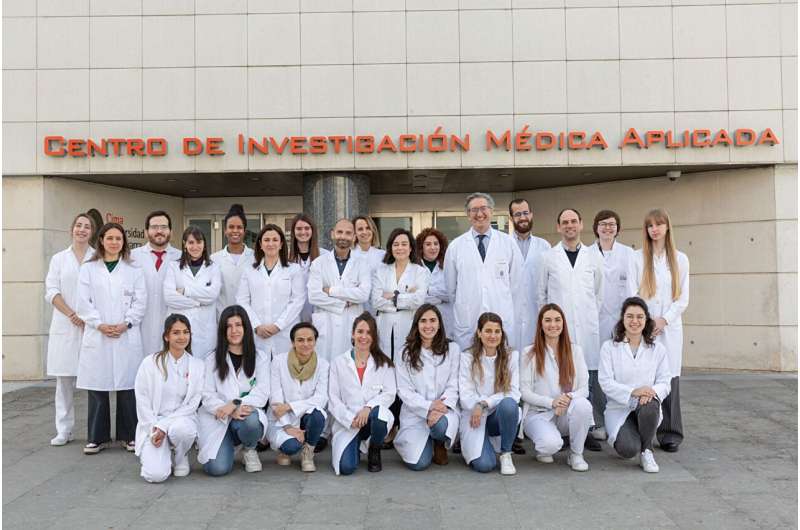This article has been reviewed according to Science X's editorial process and policies. Editors have highlighted the following attributes while ensuring the content's credibility:
fact-checked
peer-reviewed publication
proofread
New calculation tool identifies a group of cancer patients with favorable prognosis

Researchers at the Cima University of Navarra (Spain), in collaboration with the Spanish Myeloma Group (GEM-PETHEMA), have developed a calculator that identifies patients with multiple myeloma and primary systemic amyloidosis who have a better prognosis because they have a more benign profile. This tool could become part of the diagnostic workup of these patients.
Multiple myeloma is the second most common hematological cancer. It is a very heterogeneous blood type, so patients have very different clinical behavior and response to treatment.
"Using flow cytometry, we have identified a subgroup of patients, both symptomatic and asymptomatic, who have a profile similar to that seen in subjects with benign myeloma precursor disease, called monoclonal gammopathy of uncertain significance (MGUS). Likewise, we have also found this subgroup of patients in another related hematologic disease, light-chain amyloidosis," explains Dr. Bruno Paiva, co-director of the Hemato-Oncology Program at Cima, part of the Cancer Center Clínica Universidad de Navarra, and director of the study.
The group developed an open-access online tool that allows any hematologist in the world to classify their patients using routine flow cytometry data. Flow cytometry discriminates residual normal plasma cells and tumor cells with high accuracy.
"Thanks to the bigdata generated over more than ten years by GEM-PETHEMA, particularly at the Cancer Center Clínica Universidad de Navarra, the Hospital Universitario de Salamanca and the Hospital 12 de Octubre in Madrid, we have developed this calculator, which identifies patients with a benign profile (GMSI) in real time and predicts their survival according to different clinical-biological characteristics," says Dr. Paiva.
The results of this research, validated in international series of patients from the United States, the Czech Republic and Italy, have been published in the Journal of Clinical Oncology.
Clinical application
This tool is very useful for both asymptomatic patients and those with active multiple myeloma. As the Cima researcher explains, "in the case of asymptomatic individuals, even if they have other risk factors, this subgroup has a very low probability of progression. In fact, after comparing with other patients who have been treated before developing symptoms, we have seen no changes in the evolution of the disease."
Meanwhile, in the subgroup with active multiple myeloma and a benign profile, 80% of patients show progression-free rates at 5 years after intensive treatment with autologous transplant. "Moreover, surprisingly, stopping treatment does not increase the risk of progression, even in those patients who had not achieved complete remission," notes Dr. Paiva. Therefore, this calculator could be useful in identifying patients in whom a partial response to treatment should not be considered suboptimal, "and should not be overtreated because of that."
The investigators also confirmed the efficacy of this tool in a group of patients with primary systemic amyloidosis, a very rare hematological malignancy with low survival rates.
"Our calculator is the result of more than a decade of cooperative work in Spain and collaboration with other international centers. We are now making it available to the scientific community to improve the management of patients with multiple myeloma and light-chain amyloidosis in the routine clinical practice," concludes Dr. Paiva.
More information: Leire Burgos et al, Definition and Clinical Significance of the Monoclonal Gammopathy of Undetermined Significance–Like Phenotype in Patients With Monoclonal Gammopathies, Journal of Clinical Oncology (2023). DOI: 10.1200/JCO.22.01916





















